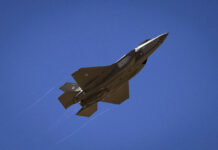
Four hours and 56 minutes. That’s all the time that it took for British Airways Flight 112 to fly from New York’s JFK International Airport to London Heathrow early Sunday. According to the flight tracking service Flightradar24, the flight broke the previous transatlantic record of 5 hours and 13 minutes between New York and London.
A jet stream at more than 260 mph turbo-charged the trans-Atlantic British Airways flight, which departed New York at 6:20 p.m. and landed in London at 4:43 a.m. Sunday, nearly two hours ahead of schedule.
The jet stream is the zone of strong winds around 30,000 feet high in the atmosphere, along which storms track. Many commercial aircraft hitch a ride along the jet stream to give themselves a speed boost. During the winter, the North Atlantic jet stream is at its most powerful, slingshotting flights eastward across the Atlantic and slowing aircraft moving to the west, often adding more than an hour of flying time to the return trip, and occasionally even a refueling stop.
As it shot across the Atlantic, the Boeing 747-400 jet reached a top ground speed of 825 mph. However, the jet did not actually break the sound barrier, since that is measured by its airspeed, or the speed of the plane relative to the air through which it is traveling. On the flight deck Saturday night, the pilots likely saw its airspeed hover close to its typical maximum cruising speed of Mach 0.855, or about 655 mph.
Supersonic commercial aircraft, specifically the British Airways Concorde, have crossed the Atlantic in far less time, with its record still standing at 2 hours and 53 minutes.
The jet stream that powered the flight across the Atlantic gained such strength due to the pressure difference between an unusually intense zone of low pressure east of Greenland and a high pressure zone to the south. (High-speed winds are the result of strong pressure differences.)
While the jet stream can help wintertime transatlantic flights have an especially speedy crossing, they are a leading cause of air turbulence. While flying through the core of a jet stream can often be smooth, entering and exiting these zones of extreme winds can be rough, as considerable amounts of wind shear – or winds differing in speed and/or direction with height – is usually present.
Climate studies suggest that future transatlantic flights may actually be bumpier as the climate continues to warm. One study, published in the journal Nature last year, found a statistically significant increase in vertical wind shear at jet-stream altitudes has already occurred across the North Atlantic.
This appears to be happening due to a sharpening contrast between the air high above the Arctic and the air found at similar altitudes above the equator. This development stands in contrast to what is happening at the surface, where the temperature difference is actually declining as the Arctic warms at more than twice the rate of the rest of the globe.
(c) 2020, The Washington Post · Jason Samenow, Andrew Freedman ·
{Matzav.com}











